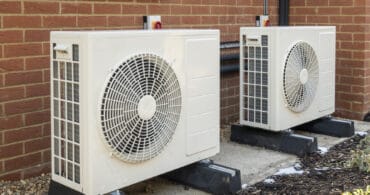Important things to Consider When Renting to Families with Children
For landlords, families often make attractive tenants, with their preference for long term lets. If you are thinking about renting to families with children, there will be various considerations to make, not least whether your property is suitable. Read on as we explore how to establish whether a property is right for family rentals, and other things to contemplate when letting to families with children.

In England, 1.7 million families bring up children in rental properties, making up 4.7 million households in the sector. For landlords, families often make attractive tenants, with their preference for long term lets. If you are thinking about renting to families with children, there will be various considerations to make, not least whether your property is suitable. Read on as we explore how to establish whether a property is right for family rentals, and other things to contemplate when letting to families with children.
Families are often considered good tenants, as they tend to prefer long term tenancies. For landlords, this means less time and outlay on tenant sourcing.
Of course, there are important things to consider if you are going to rent to families with children, not least whether your property is suitable. Let’s take a look at some of the features that make good family rentals.
Location
If you are thinking about investing in buy to let property that will be appealing to families with children, then location is going to need to feature high on your list of priorities.
Good school catchment areas are crucial, so be sure to do your homework and opt for locations that offer good to outstanding Ofsted ratings.
Also seek out areas that offer a positive balance of good transport links and tranquillity. Families tend to look for areas with plenty of recreational opportunities, so think green space, days out and ample leisure and shopping facilities.
Long term tenancies
Families appreciate security and peace of mind, particularly when they have children attending school.
Offering longer term tenancies is therefore an ideal scenario, although you should of course always protect yourself with a break clause in the tenancy agreement, and be sure to carry out comprehensive reference checks to ensure you are setting yourself up for a positive long term tenancy.
Storage
Families with children are always appreciative of ample storage space to cater for their mountains of clothes, toys and other baby and child related necessities such as buggies and highchairs.
Outdoor space
A safe place to play, and a nice space to entertain, are both factors that are important for families. A fenced or walled garden will always be attractive, especially if it offers a natural or, better still, artificial lawn for the children to have fun on, and a patio or decking area on which the adults can relax.
Be sure that everyone is clear on their garden maintenance duties, and include in the tenancy agreement any restrictions on how you expect the garden to be used.
Pet-friendly
Whilst 50 per cent of households in the UK currently own pets, 69 per cent of private landlords refuse to accept them. However, families will often have pets, so if you are considering family rentals, then it is well worth considering offering a pet-friendly tenancy.
Of course, there are numerous considerations to factor in. Regular mid-term inspections will help detect any pet-related damage early on, whilst a clause in the tenancy agreement asking the tenant to accept responsibility for any damage caused by the pet is a good idea. It is also acceptable to make a reasonable request for a higher deposit, and to get the tenant to agree to cover the cost for any specialist cleaning or fumigation required at the end of the tenancy.
Property management the simple way, by homes2let
If you are considering a family rental, but would prefer to hand over all the associated property management responsibilities, why not allow homes2let to take care of all the day to day tasks?
Not only will everything be handled for you, including sourcing and referencing tenants, arranging property inspections and returning the property to a rentable condition at the end of the tenancy, but you’ll also get your rent paid in full every month, even during void periods, courtesy of the homes2let guaranteed rent scheme.
Interested to learn more? You are welcome to get in touch with our expert team.
Related Insights

Landlords: How to Make Your Property More Energy-Efficient
With the importance of tackling climate change ever growing, and a new generation of tenants becoming increasingly eco-aware, it has never been a more important time for you as a landlord to start boosting the energy efficiency of your rental property. Not only is it a good move for the environment, it will also help you attract and retain good tenants.

Heat Source Pump Grants Coming Soon for Landlords
As confirmed in the recent Autumn 2021 Budget, landlords have been included in the government’s heat source pump grant scheme, which will provide access to grants of £5,000 to help replace gas boilers with low-carbon air or ground source heat pumps from April 2022.

7 Effective Strategies to Minimise Inheritance Tax and Maximise Guaranteed Rent on Your Property
Reducing inheritance tax on your property is essential to maximise the value passed to your heirs. Learn effective strategies like gifting, trusts, and exemptions to minimise your tax burden.






